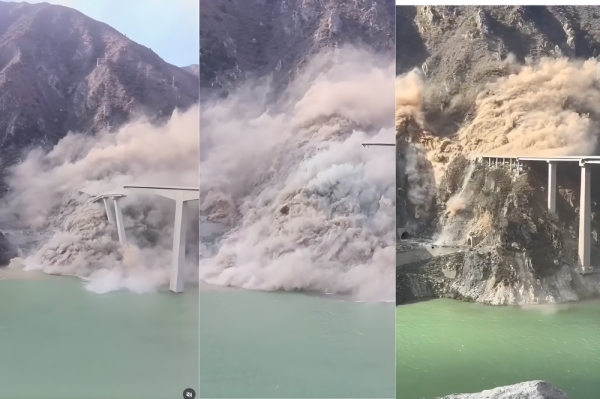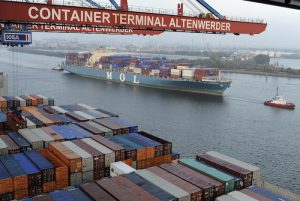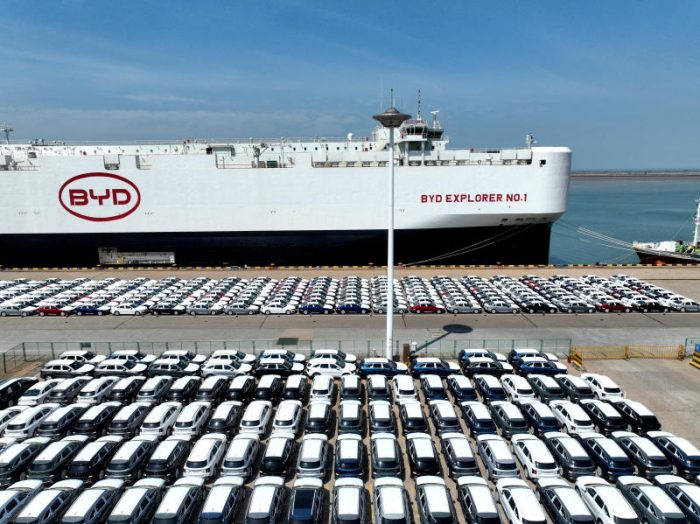A new bridge that opened in southwest China earlier this year partly collapsed on Tuesday afternoon after a landslide ruptured the mountain and foundations on which it was built.
Footage of the drama released by state media showed sections of the 758-metre-long Hongqi bridge in Sichuan plunging into the river below, near the Shuangjiangkou Hydropower Station.
Fortunately, there were no casualties, because the bridge had been closed to traffic. Inspection crews spotted cracks on nearby slopes and roads, and shifts were reportedly seen in the terrain of the mountain, according to The Global Times.
ALSO SEE: Amid Fears Of An AI Bubble, Indian Equities Become Surprise Hedge
The bridge was part of a highway linking the province to Tibet, which China invaded in 1950 and seized control of the following year.
A video of the drama from the Chinese state media website shows a huge cloud of dust and smoke as the structure plunges into the river.
Collapse linked to seismic risks and new dam
The Hongqi bridge had been touted as an engineering marvel, with a main span 232 metres high, and reportedly capable of withstanding earthquakes of up to 8 magnitude, according to a report by the Tibetan Review.
Geological instability was quickly suspected to have caused the landslide and bridge collapse, because Sichuan and Yunnan are in a region prone to earthquakes. More than 69,000 people were killed in a massive quake in Sichuan in May 2008.
But there has also been speculation linking the drama to the recent opening of Shuangjiangkou, the world’s tallest hydroelectric dam.
The Tibetan American Network, an online Tibetan-language daily news service, reported on Tuesday that sources in Tibet said geological disturbances occurred just after a ceremony was held on Sunday (Nov 9) on the completion of the Shuangjiangkou Dam nearby.
The 315-metre-tall dam, designed to generate 2,000 megawatts of electricity annually, submerged the old crossing along the G317 national highway, the report said.
The dam started filling on May 1, the Review said, adding that Sichuan is a seismically active area and that its alpine landscape is notorious for landslides. But it also noted that these risks were “exacerbated by climate change-driven monsoons” and the weight of massive hydroelectric dams upstream.
Large dam reservoirs are known to trigger earthquakes, especially when dams are erected in active quake areas.
Conditions on the mountainside by the Hongqi bridge worsened on Tuesday afternoon, triggering landslides, leading to the collapse of the approach bridge and roadbed, according to Reuters, which cited a local official.
While “geological instability” appears to be the primary cause, investigations are reportedly underway for evidence of design flaws, the quality of materials and shoddy workmanship.
Millions of people looked at the video of the bridge collapse, which sparked debates on X and Douyin about “tofu-dreg” projects — slang for subpar construction, the Review said.
Extreme weather risks increasing
It has also drawn attention to the safety of China’s infrastructure and raised questions on whether it can withstand the increased number of extreme weather incidents, and if the country really needs to continue building coal power plants that are seen to be worsening global warming.
China has been a vigorous builder of infrastructure – highways and high-speed rail lines – in the 13 years since Xi Jinping became president, but it has suffered a spate of bridge and road collapses in recent years.
A few months ago, at least a dozen workers were killed when a 1.6-kilometre railway bridge collapsed during construction in northwestern Qinghai province.
And last year, at least 38 people died when a bridge partly collapsed in Shaanxi province when torrential rain and a flash flood swept over two dozen vehicles into a fast-flowing river.
In May 2024, some 36 people were killed after heavy rain caused a section of highway to collapse in a mountainous part of Guangdong province.
- Jim Pollard, with Reuters.
ALSO SEE:
Floods Swamp Cities in Southwest China, And More Storms Due
Firms Underestimating Risks From Carbon-Fuelled Climate Change
Carbon Removals Not Growing Fast Enough For Climate Goals
Climate Change Has Cost China $32 Billion in Just One Quarter
Floods or Drought: Climate Change Worsens Global Water Woes
China’s Billion-Ton Coal Expansion Plan Sparks Methane Fears
Continued Fossil Fuel Investments Put $557 Trillion ‘At Risk’
Scientists Fear Nature’s Carbon Sinks Are Failing – Guardian
China Coal Output Rises But Power Generation Use Declines























